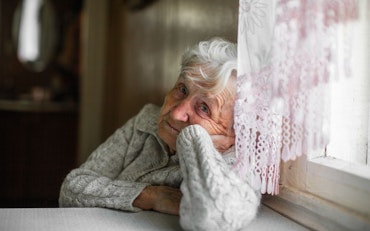SA Government cuts rebates to Personal Alert System Rebate Scheme
The South Australian (SA) Government has announced it will be making changes and cutting the Personal Alert Systems Rebate Scheme (PARS) monitoring component by 20 percent.
![<p>The changes to the Personal Alert System Rebate Scheme will be coming into effect on July 1 and people accessing PARS have to apply through My Aged Care to get a device. [Source: Shutterstock]</p>](https://agedcareguide-assets.imgix.net/news/articles/news/articles/shutterstock_1314015752.jpg?fm=pjpg&format=auto&w=550&q=65)
The changes to the Personal Alert System Rebate Scheme will be coming into effect on July 1 and people accessing PARS have to apply through My Aged Care to get a device. [Source: Shutterstock]
PARS is used by over 14,000 older South Australians who require an extra sense of security using either a pendant worn on the wrist or around the neck with an alert button to press in an emergency.
The changes to the scheme will be coming into effect on October 1 and people accessing PARS have to meet the eligible criteria which includes seeking an assessment for a Home Care Package.
People who receive the lowest level of Commonwealth funding will still be eligible for PARS, but people on higher levels of Commonwealth Home Care, Levels 2-4, will not be able to access the scheme since the funds are available through their package.
Anyone who is not eligible for a Commonwealth Home Care Package can still be eligible for PARS if they meet the other criteria.
While the purchase of a device, a $380 maximum subsidy fee, will remain the same for successful applicants, the State Government will make a 20 percent cut to the $250 yearly subsidy to monitor the devices.
For clients, the price for monitoring the devices will be $200 per year and will take effect from October 1, 2019.
Member of State Parliament and SA-Best elected member, Frank Pangallo, has described the cut as “penny pinching”.
“The mean-spirited cost cutting measure by the Marshall Government literally puts at risk the lives of hundreds of elderly and vulnerable South Australians,” says Mr Pangallo.
“This is cruel, heartless and needless. These crucial devices give pensioners aged over 75 – and their families – a sense of security and independence in their own homes.
“The State Government is picking on vulnerable pensioners just to scrounge a few extra dollars.”
The State Government’s Department of Human Services stated that the changes aim to reduce duplication between the scheme and the Commonwealth Government’s aged care services, not shift responsibility between the two.
Additionally, the State Government believes these changes protect the future sustainability of the scheme.
Another SA-Best elected member, Connie Bonaros, believes that many elderly people who access PARS will struggle to pay the gap for their devices since they already have limited funding and no way to generate income.
“The whole objective of the Scheme is to allow our elderly citizens to live independently in their own homes for longer,” says Ms Bonaros.
“The fear is now that many older South Australians will abandon their alerts due entirely to their inability to find the extra $50 a year to pay for the gap.”
Mr Pangallo has alleged that Personal Alert Systems Rebate Scheme Government suppliers have expressed concerns around the extra costs may encourage older users to switch off their devices because they can’t afford the system monitoring gap.
He also states that suppliers were only given two weeks’ notice about the new changes to the scheme.
The Department of Concessions and Support Services says the changes don’t come into effect until October and that PARS suppliers are yet to finalise their cost structures and provide formal advice on their pricing.
Customers are encouraged to approach their individual supplier to discuss if the change will have an impact on them, as indications to the Department are that not all suppliers will on-charge a $50 gap.
For more information on eligibility for the Personal Alert Systems Rebate Scheme, visit the Concessions SA website.










